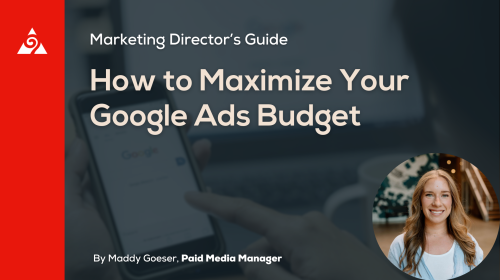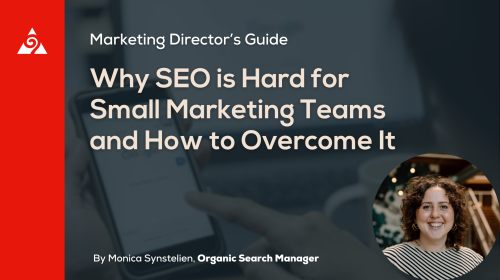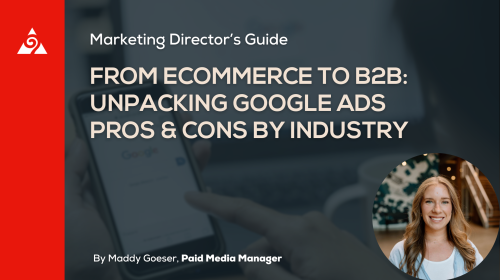The many areas of digital advertising can be confusing for people who are just getting started. To make things easier, we explain 27 definitions and acronyms that focus on two major areas of digital marketing, paid search and organic search. For more in-depth reading, we included some links below some of the terms. We hope this list will refresh you on some important terms so the next time you talk to an expert digital marketer, like one of ours, you won’t get lost in the jargon!
Definitions
What is an Audience?
In Google Analytics, you can segment people many different ways, including by demographics, geography, interests and site browsing history. These segments are referred to as audiences.
Read more about maximizing ROI with audiences>>
What is Attribution?
Trying to answer the question of what digital marketing efforts led to a conversion on your website. Google Adwords has several different attribution models that try to account for this.
What is Bounce Rate?
The percent of visitors that leave the page they entered your website on without visiting another page. A high bounce rate could mean an off-topic page or poor design.
How To Improve Your Bounce Rate>>
What is Branded Search?
When somebody searches for your products or services along with your brand name, meaning they already know about your company (and are more likely to purchase from you instead of your competitors).
What is Conversion Rate Optimization
The practice of increasing the percentage of website visitors that perform your conversion, or desired action (form-fill, call, subscribe, purchase, etc.).
What is Keyword Volume?
The number of monthly searches a particular keyword gets on average.
What is a Landing Page?
A page specifically designated for a visitor to land on. Landing pages are usually highly specific to a given topic in order to have the best chance of the visitor converting to a lead or customer.
What is Marketing Automation?
The process of automating repetitive tasks associated with online marketing through the use of technology such as software. Examples can be automated emails, social media posts and other forms of engagement related to customer relationship management.
Learn More About Marketing Automation>>
What is Native Advertising?
Ads that appear as if they are a part of the content where they are placed.
12 Examples of Native ads (and why they work)>>
What is a Negative Keyword?
A keyword or search term that you do not want to show up for. In Adwords, Bing and Yahoo, you can add negative keywords to block them and avoid paying for ads on those results pages.
What is AdWords Quality Score?
A rating of your advertisement from Adwords, Bing, or Yahoo. While the exact formula by each publisher varies, it generally incorporates relevance, landing page experience, and click through rate. The publisher then multiplies your bid by your quality score to determine how high your ad ranks on the results page. Having a higher quality score will usually result in a lower cost per click.
The Ultimate Guide To Google Adwords Quality Score>>
What is Retargeting?
Showing ads to users based on their previous browsing activity. For example, having your display ads show up on Facebook to people who have visited your website in the last 30 days. You can also use RLSA to retarget with search ads.
What is a Subscriber in digital marketing?
In digital marketing, a subscriber is someone who has opted-in to receive content from you. In most cases, this means someone who fills out a form on your website and agrees to receive emails.
Acronyms
CPA (Cost Per Acquisition)
Cost per acquisition measures what you pay each time someone clicks on an ad and then performs an action you have set as a goal. It is one of the commonly used bidding strategies for paid search.
CPC (Cost Per Click)
Cost per click measures what you pay for each click on an advertisement, or at a higher level across a group of ads or campaigns.
CPM (Cost Per Mille)
Cost per mille is what you pay per 1,000 impressions of an ad.
CRM (Customer Relationship Management)
Customer relationship management refers to how you keep track of your leads and current customers. It also refers to how you engage these people, and how they are interacting with these engagements.
CTR (Click Through Rate)
Click through rate for an ad is the number of clicks divided by the number of impressions.
KPI (Key Performance Indicator)
A key performance indicator varies based on your company, but it generally defines a digital marketing metric that is heavily correlated with your overall goals and strategy, such as conversions.
Read more about using KPIs to determine if your blog is on topic for your audience>>
Read more about which KPIs really matter>>
PPC (Pay Per Click)
Pay per click generally refers to paid advertising across search engines and display networks where you are charged by the published based on the number of clicks on your ad.
RLSA (Remarketing Lists For Search Ads)
Remarketing lists for search ads is a type of campaign in Google Adwords where you build a custom audience of people who have visited your site or searched for your products. You can then specifically target this audience through search remarketing.
ROAS (Return on Ad Spend)
This key metric measures the value you assign from conversions (revenue or profit, when possible) divided by the cost of the advertising. Keep in mind that when revenue is used as the value, ROAS can be misleading if you do not factor in your profit margins.
RSS (Really Simple Syndication or Rich Site Summary)
Really Simple Syndication is a format for publishing web content that frequently changes. Think of it as a common language for content, such as blogs, that you want to distribute across the web even though it needs to be frequently updated.
SEM (Search Engine Marketing)
The paid side of search engines, including Google, Bing and Yahoo. SEM refers to your strategy surrounding paid traffic to your website.
SEO (Search Engine Optimization)
The non-paid, or organic side of search engines, including Google, Bing and Yahoo. SEO refers to your strategy of getting traffic to your website without paying for it.
Don’t migrate your website without these SEO tips!>>
SERP (Search Engine Results Page)
A search engine results page is a term for the page you see when you search for a certain keyword. It is commonly referenced when analyzing where you rank for a keyword, as well as where your competitors are ranking.
UTM (Urchin Traffic Monitor)
A UTM is a parameter, or a tag, that you add on to the end of a URL to help with understanding attribution in digital marketing. When someone clicks on a URL with a UTM at the end of it, that can be tracking in Google Analytics to help you understand more details about how people are getting to your website.



